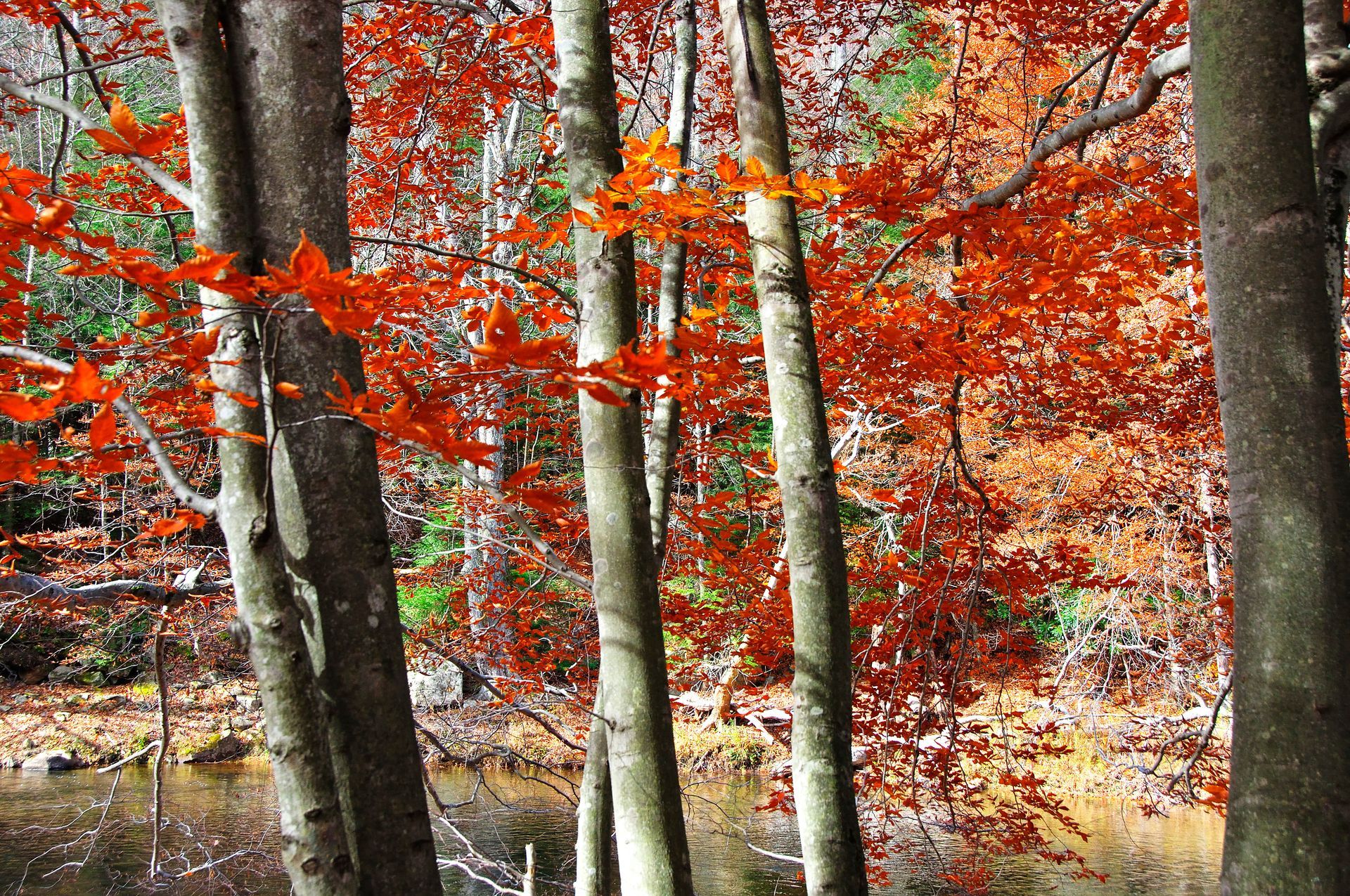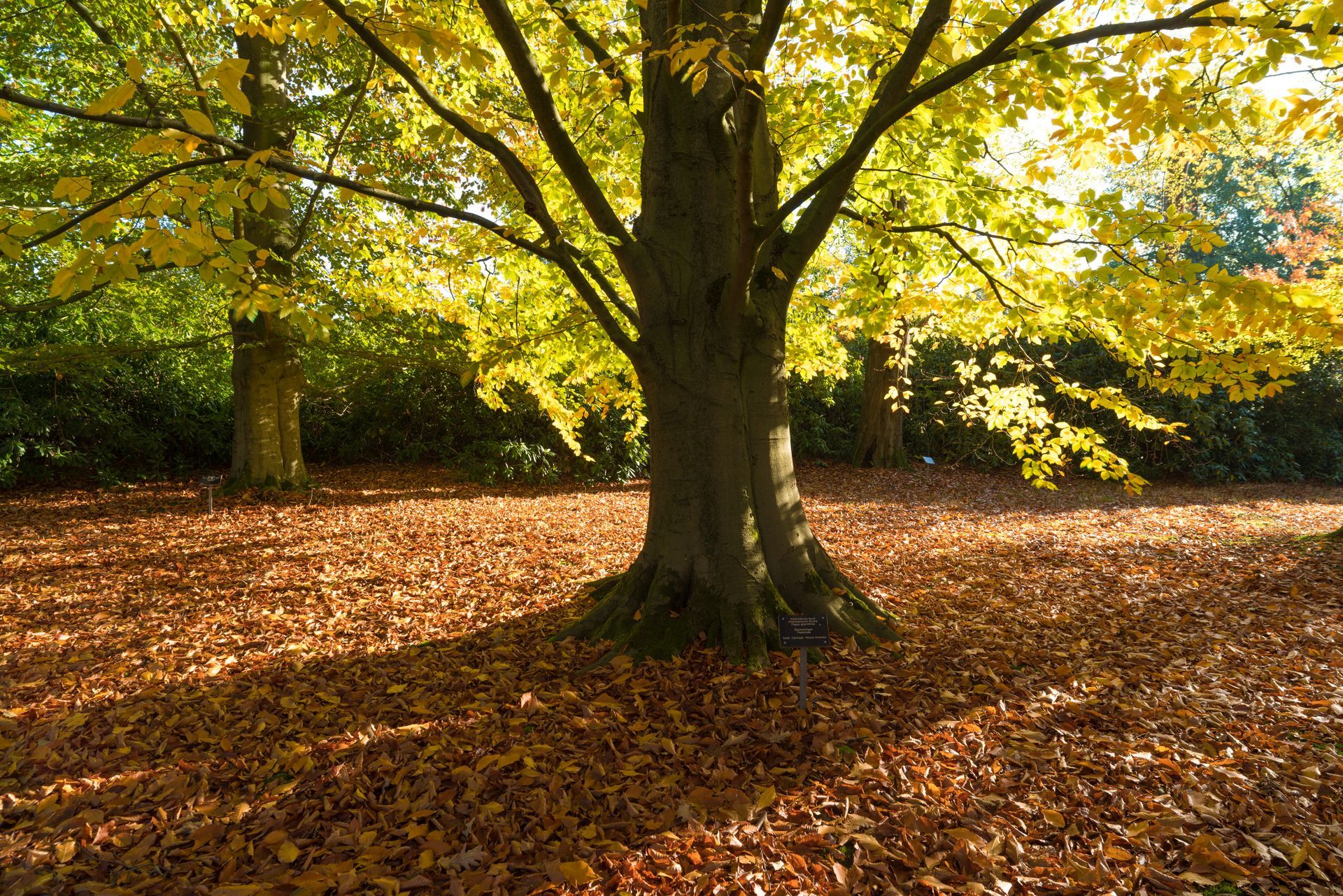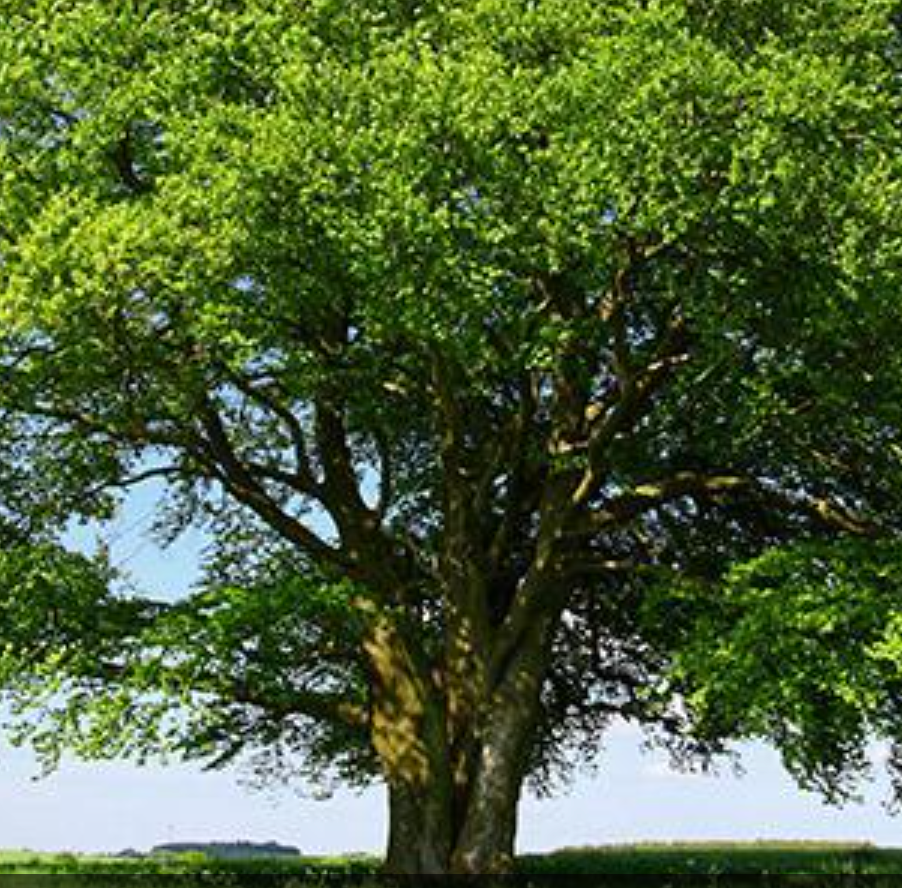Sweet New Earth is an ad free and entirely reader-supported site.
When you purchase products through links on our site, we may earn a commission which supports our reviews.
Learn more.
American Beech Tree Care

Native to eastern North America, the American beech is a deciduous and sturdy tree that can grow up to 80 feet, sporting dense foliage and a rounded crown. Beech wood is often used to make tool handles, sports equipment, furniture, and cooking utensils. Bark from some varieties is also used for making drums and piano pin-blocks.
Fast Facts for American Beech Trees
| Common Name | American Beech |
|---|---|
| Scientific Name | Fagus grandifolia |
| Month(s) of Harvest | The fruit, called mast or beechnuts, drops in autumn but is produced in spring after the appearance of new leaves. |
| Light | Requires full sun with at least six hours of full light daily but also does well in partial shade |
| Water | Needs an inch of water per week, but water shouldn't puddle around it since it results in beech root rot |
| Soil | Grows best in loamy, sandy, moist, well-drained, and acidic soil |
| Fertilizer | Needs a pound of fertilizer per 100 sq ft of area |
| Pests | Susceptible to leaf-feeding pests, such as leaf beetles, eriophyid mites, and gypsy moths |
| Diseases | Susceptible to beech heart rots from Ganoderma applanatum attack and beech leaf disease that kills ornamental and native species of the American beech |
| Growing Zone | 4 to 9 |
Table of Contents

How To Take Care of American Beech Trees
Whether you're growing it as an ornamental tree or for shade, you should know the following about American beech tree care.
Soil & Container
Choosing the right soil is extremely important for growing healthy American beech trees. The soil should be well-drained, moist, and acidic.
A well-draining soil has the following advantages for beech trees:
- It prevents shallow roots, which can disrupt nearby hardscapes, such as driveways and sidewalks.
- It prevents fungal growth, keeping the tree safe from lethal diseases.
As for the container, it should be large enough to accommodate the American beech's root system. We suggest a large (but not too large) container with good drainage holes filled with a light, airy soil mix that is slightly acidic.
Root Inspection
If your potted American beech plant is big enough, you can transplant it in the fall. Dig a hole in your yard or garden and pull the plant out of the container.
Wash the root ball with water to make the roots visible. See if any roots are damaged or broken. Remove them.
If you see any tangled roots, detangle them. Similarly, change the direction of circling roots so that they go outward from the main trunk. Once the root ball looks good, you can transplant the tree into the soil.
Water Requirements
American beech trees have average watering needs. They should get 1 inch of water every week. But make sure you do not let the water puddle at the base of the tree, as it will result in root rot.
American beech trees can tolerate dry spells. However, they are not drought-tolerated, so do not grow them in drought-stricken regions.
Fertilizing and Filling
Beech trees need a balanced fertilizer with a 10-10-10 NPK ratio. In fertilizer, the NPK ratio shows how much of these three nutrients are present in the fertilizer mix:
- Nitrogen
- Phosphorus
- Potassium
For example, if you get a 2kg bag of fertilizer with an NPK ratio of 10-10-10, it has 10% nitrogen, 10% phosphorus, and 10% potassium by weight.
American beech need 2kg of 10-10-10 fertilizer once a year. Or, you can measure the amount of fertilizer based on your tree's size. It requires one pound of 10-10-10 fertilizer for every 100 square feet of area.
Spread the fertilizer on the ground under the tree. Water it to let the ingredients absorb into the soil.
Sun & Placement
The American beech needs full sun for six hours a day. It can also do well in partial shade, but the American beech tree flowers best when it gets enough light. Place your tree in the part of your yard that gets the most sunlight.
Temperature and Humidity
American beech can thrive in various climatic conditions. But it does best if the temperature range is between 4 and 21°C. Being a hardy species, it can stay alive if the temperatures drop below -42° C (-44° F).
Due to this, you do not need to provide any winter protection to your tree. But you should cover the bark with a metal guard or hardware cloth since gnawing animals like rabbits chew the beech's smooth bark. After the tree has grown for a few years, you won't need this additional protection.
Regions with moderate humidity are ideal for growing beech trees.
Pruning
You should prune your American beech at a time when it's least likely to get damaged. The best time for this is late winter to early spring.
Most people prune American beech to maintain a height of 2.4-3m (8-10ft) so that the lower branches can have enough space for development. When pruning, do not cut branches more than 6 cm (2½in) in size because they do not heal readily.
Here's how to prune this tree:
- Cut the suckers from the tree as they appear throughout the year. You don't have to wait until late winter to remove them.
- Cut off any damaged or diseased branches whenever you see them.
- For diseased branches, cut them to about a foot from the diseased area.
- Remove the lower branches if you want your tree to have a towering canopy.
- Remove some branches from larger forks since they tend to be weak and may break under the pressure of heavier limbs.
- Young beech trees are easy to prune with your DIY tools. But mature trees require an arborist's intervention.

Did You Know? The American beech was the habitat for migrating Passenger Pigeons in hilly US locations. So many of them perched on the tree's branches that they would break off.
American Beech Tree Problems
Like any other large tree species, the American beech is also susceptible to a host of problems. Here are some common ones.
Not Flowering
The American beech tree has both male and female flowers. The male flowers, called staminate, and the female flowers, called pistillate, grow on the same tree.
If your beech tree isn't flowering, it's not old enough. American beech take about 40 years to flower. That's quite long! You'll also begin to see beech nuts on the tree after four decades.
In some cases, the tree may take about 50 or more years to reach maturity. However, don't let this discourage you from growing beech trees. While it matures, you can enjoy its shade.
Yellowing and Curling Leaves
Beech leaf disease is a concerning disease of the American beech that affects trees between ages 2 and 7. The symptoms of this disease include:
- Yellow and curling leaves
- Leathery leaf texture
- Stripes on leaves
Most signs of the infection appear in May. The disease progresses for a few months until the leaves drop from the tree in October. The same tree may have uninfected and infected branches.
You should remove the infected branches immediately so the disease does not spread to healthy limbs.
Wooly Trunk Spots
Caused by Cryptococcus fagisuga, beech scale is a common problem for American beech trees. Scale builds up at the speed of six miles per year, killing the beech tree in just a few years.
A tree weakened by scale also becomes prone to cankers. These wounds can further allow the entry of wood-boring insects and decaying fungi.
The best way to deal with the disease is to kill its causative agents. For smaller trees, a strong stream of hose water can remove the scale. Meanwhile, dormant oils, insecticidal soaps, and insecticides are suitable for removing scale from larger trees.
Low Canopy
Beech trees have a naturally low canopy. Their lower branches can often cause obstruction with motor vehicle and pedestrian movement.
You can solve this issue by pruning the lower branches. Start pruning lower branches when your tree is young. Pruning after the tree has matured can damage its structure.
Learning About American Beech Trees
Although there are no cultivars of the American beech, there are quite a few of the European beech. These include:
- European Beech: It's almost like the American beech but has a darker bark. Plus, the growth habit is less dense.
- Copper Beech: The tree is known for its purple leaves.
- Tricolor Beech: It has variegated leaves with green, white, and pink coloration. Compared to other beech trees, it's smaller at 30 feet.
The fruit of the American beech is eaten by mammals and birds. In fact, it's a delicacy for squirrels and chipmunks.
American Beech Tree Origin Story
The American beech originated in the eastern United States. It still grows abundantly in eastern North America, especially in North Carolina. Some other regions where it's popular include Wisconsin, northern Florida, and eastern Texas.
When early settlers came to the US, they considered the location of American beech to be a sign of fertile soil. So, they would remove the tree to plough the land for food farming. Ironically, they make for the of the best front yard trees however most people don't plant them.
Sweet New Earth's Final Word On American Beech Trees
The dense growth, ornamental value, shade, and white-tailed deer resistance of the American beech make it a popular choice for landscaping.
In their native habitat, the American beech trees can grow quite tall with a dense and towering canopy. If you plan to grow a single tree, make sure you place it under full sun, water it regularly, and provide it with sufficient nutrition through a balanced fertilizer.
Growing an American beech tree requires a lot of patience. Likely, you may not see the tree bloom or fruit during your lifetime. But it's a beautiful investment for the future.

Christina Hernandez
Christina has done most of her research on environmental science but recently has changed her focus towards sustainable forestry. She has a passion for the outdoors and wants to spread that passion to the world.
Join our community!
Join to receive guides, insights, and the latest gardening deals!
Newsletter
Thank you for subscribing!
Please try again later
Sweet New Earth is reader-supported. When you buy through links on our site, we may earn an affiliate commission.
All Rights Reserved | Sweet New Earth
